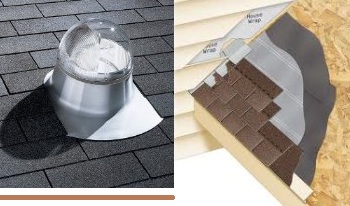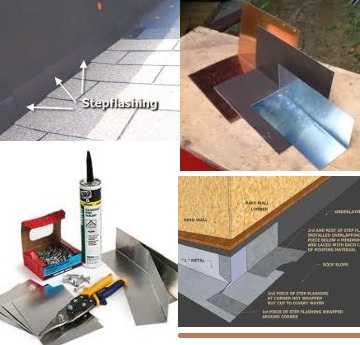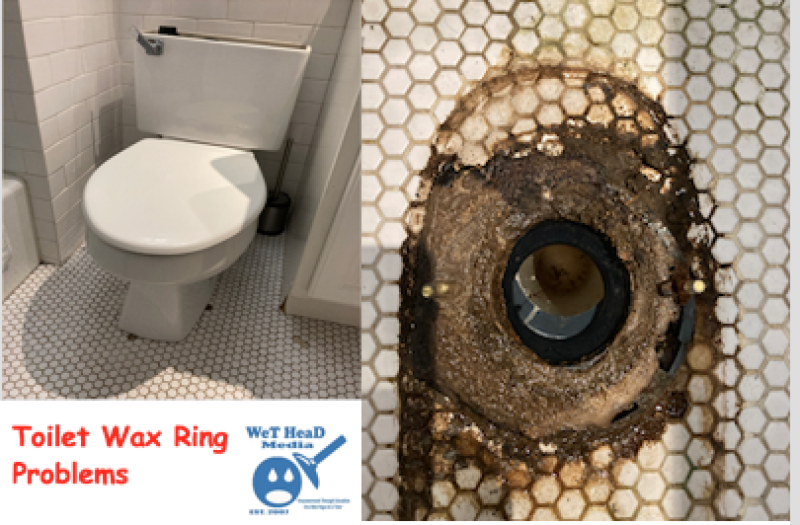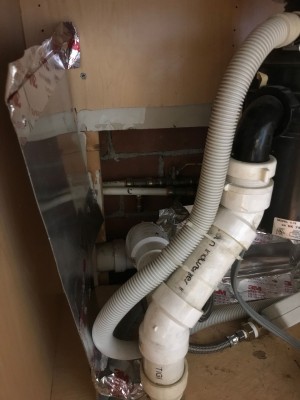Leaky Roof Inspection and Repair
No matter what material your roof is made of, it has to be properly and regularly maintained. If not, smaller problems will become bigger ones with more expensive consequences. If you have the knowledge, you can even repair small damages yourself. Call well trained roofer if you think your roof needs professional help.
 First sign of the water leakage are stains on the walls and ceilings. To repair leaky area, first of all, you have to find the leaks. That can be difficult as water travels through the different layers if the roof and very often the leaks are far from the stained spot.
First sign of the water leakage are stains on the walls and ceilings. To repair leaky area, first of all, you have to find the leaks. That can be difficult as water travels through the different layers if the roof and very often the leaks are far from the stained spot.
You will have to inspect carefully not only the surface of the shingles but flashings, valleys and chimneys to find the leak. When inspecting the roof surface, make sure to look for any missing, cracked or broken shingles and loosen or missing nails. Bald spots on the surface of the asphalt shingles are sign of wear out.
Valley is the line where two roof planes meet. You can use rolled roofing and metal flashings in the valleys or you can just lace the shingles together. In that case, make sure that neighboring shingles are properly cut so that they fit firmly. Otherwise there would be a gap on the very top and water would enter the house damaging the walls.
There are two types: wall flashings and wall step flashings. Flashing is made of metal, usually galvanized copper, steel and aluminum. It protects the house by making the water to flow down the slope and away from the house. On pitched roof gravity helps water to flow down. On low slope roof water tends to accumulate and properly installed flashing is even more important. If it works well the roofing top surface is watertight. If not, you will have problems with leaky roof and have to repair roof flashing.
You can find step flashing where the roof climbs along vertical wall. If this is done properly, you will only be able to see very small part of it. Wall flashing is found where the roof meets vertical wall. It should go 3 inches over the shingles. If the wall is made of brick flashing must go 1 inch into the mortar. Do not use caulk or roofing cement for this work; metal one should be used in this situation. If the flashing is not installed how it should be you would have leakage sooner or later.
To avoid these problems it is recommended to check the flashings from time to time and repair it if there are damages. Although it is made of rust resistant material (such as galvanized steel) flashing does corrode in time. If you find rust spots on the it, clean it using wire brush or steel wool and solvent. Avoid contact between solvent and asphalt shingles; solvent will damage the shingles. Apply zinc-based primer and one or two coats of rust-inhibiting paint. Sometimes water finds the way inside the house through the gaps under the loosen nails. All you have to do in that case is to tighten the nails. If there are missing nails, replace them but make sure you do that with the nails which are made of the same material as flashing. Otherwise, metal will corrode. If you notice that roofing cement and caulking are dry or cracked, reseal the existing one and that will solve the problem.
Depending on the weather condition (temperature and humidity) all the components expand and contract. To avoid flashing repairs due to these seasonal changes, install two-part system. This system is made of based flashing which is laced into the roofing and second part which overlaps the base. Second part should not be fixed to the base. Both parts can move against each other when the other components of the roof expand or contract.
If you are looking for quick and easy repair solution, Quick Repair kit is available at homedepot store in your area at the cost of around $200 per unit. It works well on the fix for small to medium leak, and is applicable for most of the materials including PVC, Hypalon, EPDM and TPO. It comes with 6″ x 2 feet size of black colored self adheseive EPDM patch, scrubbing pad, matching gloves and the patch roller as well. When you apply the component, it will seal the area and make it waterproof.
If the damaged area is big and not repairable, you might need to replace a couple of shingles by hands. Roofing shingle remover and roof sealant are available at the local store as well to make your job easy. You will also need hammer, a flat pry bar, a utility knife and a bunch of roofing nails when replacing damaged shingles. Usually there are four nails initially placed on top of each shingle, and the next layer will go on. First insert the pry bar under the shingle right above the damaged one and remove the first row of nails. Then softly lift the damaged one so that it can be detached from the sealer strip.
Chimneys contain various types of flashing. Broken piece or holes in it cause water leakage. Never use caulk to repair chimney flashings. Another risky area is vent unit. It is often made of rubber. Rubber deteriorates within 10 to 15 years. If you find cracked rubber around the pipe, you should repair it if you don’t want it to cause leakage problems.
Clogged gutters and downspouts can cause problems with leakage, too. Water can’t flow away from the house and damages the exterior walls or causes basement leaks. Any broken part of the gutters or downspouts must be repaired or replaced. Otherwise, soon enough water leakage will damage walls and ceilings.
There is another thing that can damage the roof and make you do some minor repair works – placing the antennas, flag poles or ladder struts on the roof. These objects should never be placed on the surface of it because it is almost impossible to repair water leakage beneath the support for these items.
As you can see, any of the roof components can cause water leakage. Regular maintenance is very important for your safety and environment; every repair should be done immediately and without postponing, thus protect your roof and the house for many years.




Flashing is very important to fill joints and seems on your roof. Without top notch flashing, water is sure to leak through your roof, and damage the roofing material. Use non corrosive metal such as copper or aluminum, stay away from plastics. And we always suggest, replace bad flashing, don’t try to repair it with roofing cement. Water will always win!
This iis my first time go tto see at here and i am actually
pleassant to read all at alone place.
npfx.com